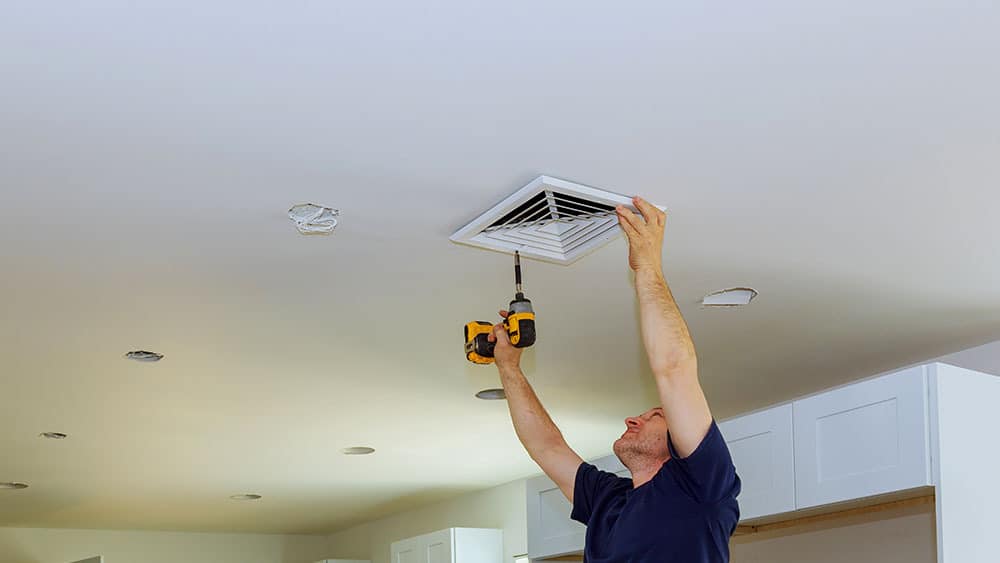Comprehending the Value of Home Air Flow for a Healthier Living Environment
Home ventilation plays an essential duty in keeping a healthy and balanced living setting. It helps with the exchange of indoor and outside air, which is very important for enhancing air high quality. Without appropriate ventilation, homes can come to be reproducing premises for toxins and irritants. The consequences of inadequate air circulation can be substantial. This raises the query of just how property owners can effectively execute ventilation strategies to safeguard their health and health. Recognizing these methods is critical.

The Basics of Home Air Flow
Home air flow works as a necessary component of indoor air high quality and comfort. It includes the procedure of exchanging stale interior air with fresh outdoor air, consequently decreasing humidity and controlling temperature level. Proper ventilation systems can include natural methods, such as open home windows and vents, in addition to mechanical systems, such as exhaust fans and air exchangers. Reliable home air flow helps avoid issues like interior mold and mildew growth and the buildup of dangerous bits. It likewise enhances total energy effectiveness, as well-ventilated spaces can keep comfortable temperatures with much less reliance on heating and cooling down systems. Understanding the basics of home air flow is essential for home owners looking for to develop a much healthier living atmosphere for themselves and their households.

Usual Resources of Indoor Air Pollution

Numerous may not realize it, indoor air pollution can originate from various sources within a household. Common factors include volatile natural substances (VOCs) produced from paints, solvents, and cleaning items. Family home appliances, such as gas ranges and fireplaces, can release hazardous gases like carbon monoxide gas and nitrogen dioxide. Additionally, mold and mold thrive in moist locations, launching spores that influence air quality. Family pet dander, dust mites, and pollen can build up indoors, more worsening contamination degrees. Smoking cigarettes inside your home generates harmful chemicals that linger airborne. Building materials, including asbestos and formaldehyde, can off-gas harmful compounds. Identifying these sources is important for keeping a healthier interior atmosphere and promoting reliable ventilation strategies.
Wellness Consequences of Poor Ventilation
Interior air contamination can have considerable health and wellness ramifications, specifically when ventilation is inadequate. Poor ventilation can bring about the buildup of damaging pollutants, such as volatile natural compounds, mold, and particulate issue. This build-up may cause respiratory system issues, consisting of asthma, allergies, and persistent obstructive pulmonary disease. People may experience signs like migraines, fatigue, and irritability of the eyes, nose, and throat. At risk populaces, such as kids and the senior, are at higher risk for serious health and wellness results. Lasting direct exposure to poorly ventilated environments can likewise add to more major problems, including cardio diseases. Consequently, making certain correct ventilation is vital for keeping a healthy living environment and minimizing the risk of wellness problems associated with indoor air contamination.
Reliable Ventilation Techniques for Your Home
Correct ventilation is important for keeping a healthy and balanced indoor setting, and applying efficient approaches can substantially enhance air top quality. House owners can start by making sure that exhaust fans are set up in restrooms and kitchens to eliminate excess moisture and smells. Opening home windows consistently allows fresh air to flow, specifically during light weather. Additionally, utilizing air purifiers with HEPA filters can assist capture airborne contaminants. For homes with home heating and cooling systems, keeping heating and cooling systems and transforming filters frequently is essential for peak performance. Integrating all-natural ventilation methods, such as cross-ventilation, can also improve air movement. Sealing any type of leakages in home windows and doors prevents undesirable drafts, which can disrupt regulated air movement, inevitably leading to improved indoor air high quality and comfort.
Keeping Optimal Air Quality Year-Round
To preserve excellent air top quality year-round, house owners have to adopt an aggressive strategy to managing their indoor setting. Routinely monitoring indoor air high quality is important; this includes checking for toxins such as dirt, mold and mildew, and volatile organic compounds (VOCs) Implementing efficient air flow systems, such as exhaust fans and air purifiers, can substantially decrease airborne impurities. Additionally, routine maintenance of cooling and heating systems assurances peak efficiency and air blood circulation. Property owners must also think about humidity degrees, as extreme moisture can lead to mold and mildew growth. Seasonal changes might require adjustments in air flow methods to fit differing outside air high quality. By prioritizing these practices, homeowners can develop a much healthier living space, promoting overall wellness for all owners throughout the year.
Regularly Asked Inquiries
Exactly How Can I Tell if My Home Needs Better Air Flow?
To establish if a home needs better air flow, one ought to observe signs such as persistent moisture, mold and mildew development, mildewy odors, condensation on home windows, or raised allergy symptoms, suggesting inadequate air movement and potentially inadequate indoor air top quality.
What Are the Signs of Poor Indoor Air High Quality?

Can Houseplants Improve Indoor Air Top Quality Efficiently?
The efficiency of houseplants in enhancing interior air quality is questioned. While some researches recommend they can go now absorb toxic substances and generate oxygen, their overall effect might be very little contrasted to correct ventilation and air purification systems.
How Usually Should I Modification My Air Filters?
The regularity of air filter changes usually relies on usage and filter type. Normally, it is advised to replace filters every 3 months, though households with allergies or family pets might require even more constant adjustments for perfect efficiency.
Exist Any Kind Of Specific Ventilation Solutions for Allergic Reaction Sufferers?
Many ventilation systems, such as HEPA-filtered systems, properly reduce allergens in the air. Home Ventilation Melbourne. These systems catch pet dog, pollen, and dust dander, supplying allergy victims with a cleaner, healthier indoor environment while managing air high quality properly
It helps with the exchange of outdoor and indoor air, which is important for boosting air top quality. Home air flow serves as a crucial part of interior air quality and comfort. It involves the procedure of trading stagnant interior air with fresh exterior air, thereby reducing moisture and controlling temperature level. Interior air pollution can have significant health and wellness ramifications, specifically when air flow is poor. Correct ventilation is vital for keeping a healthy and balanced indoor environment, and carrying out effective site methods can significantly boost air quality.